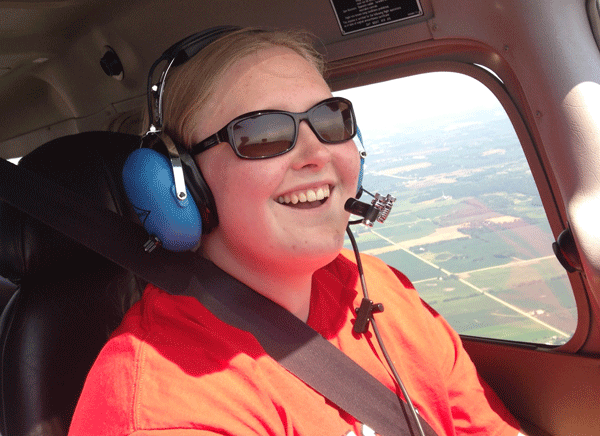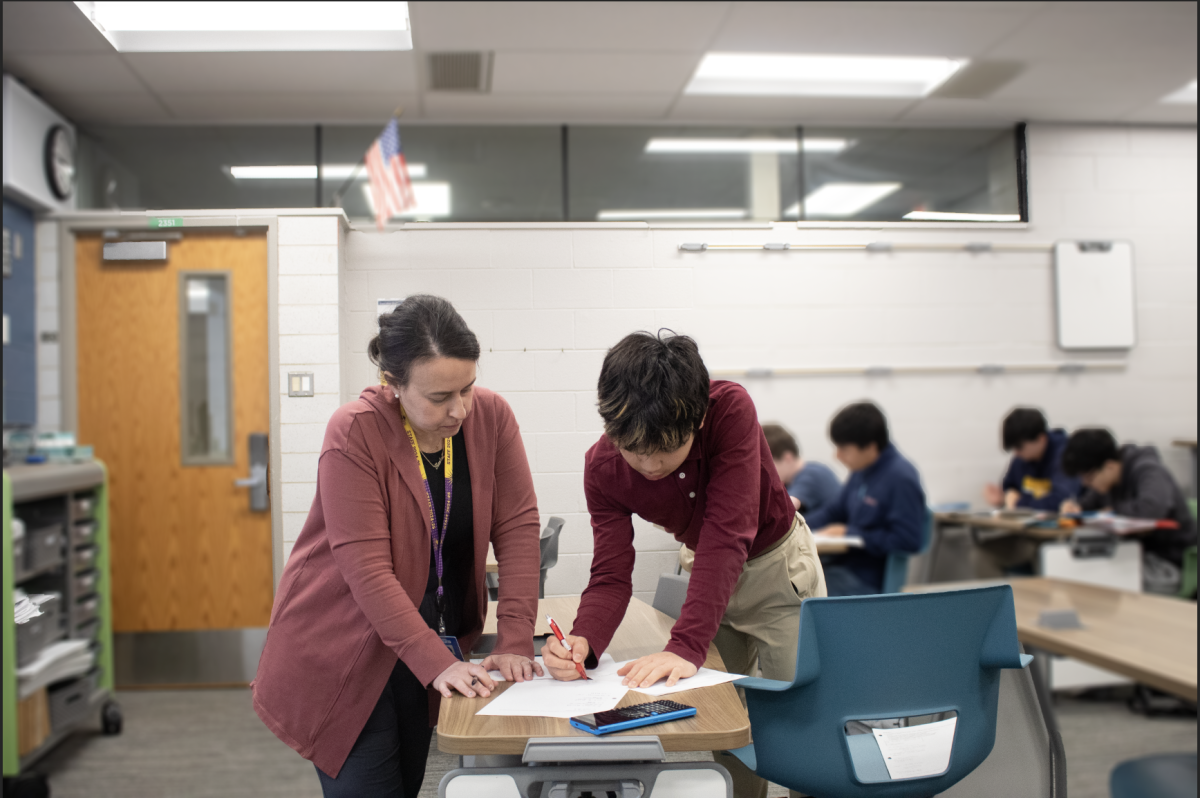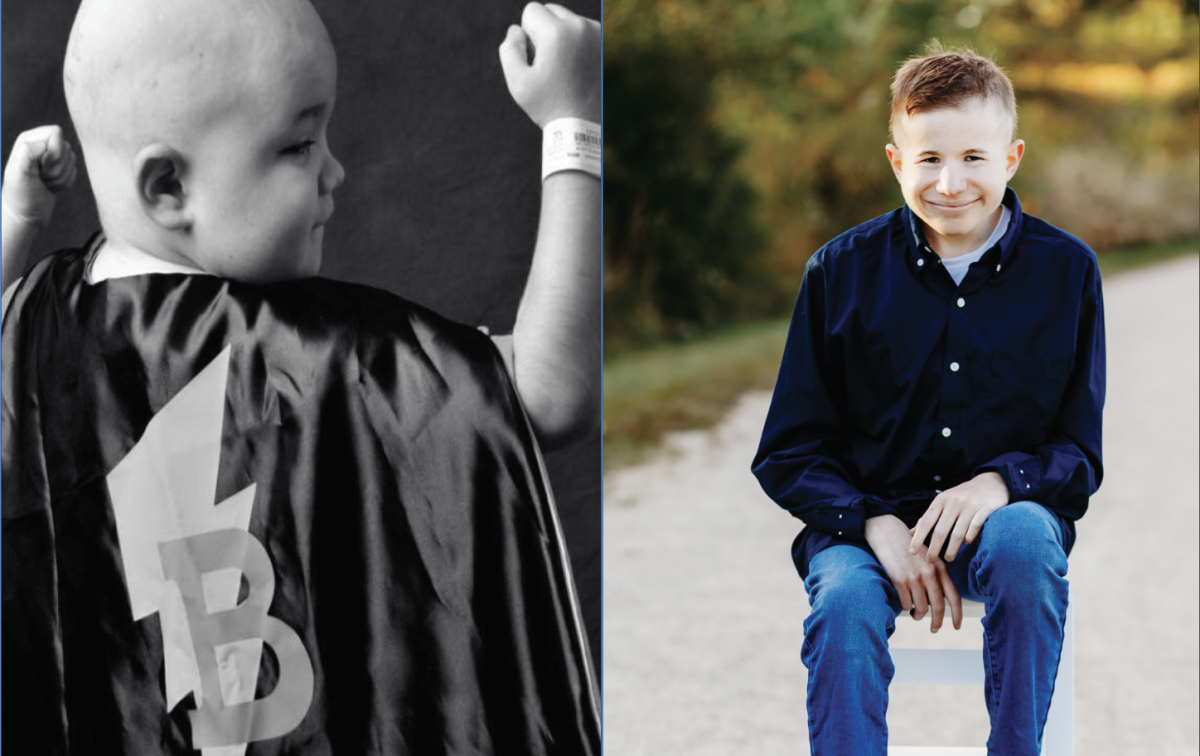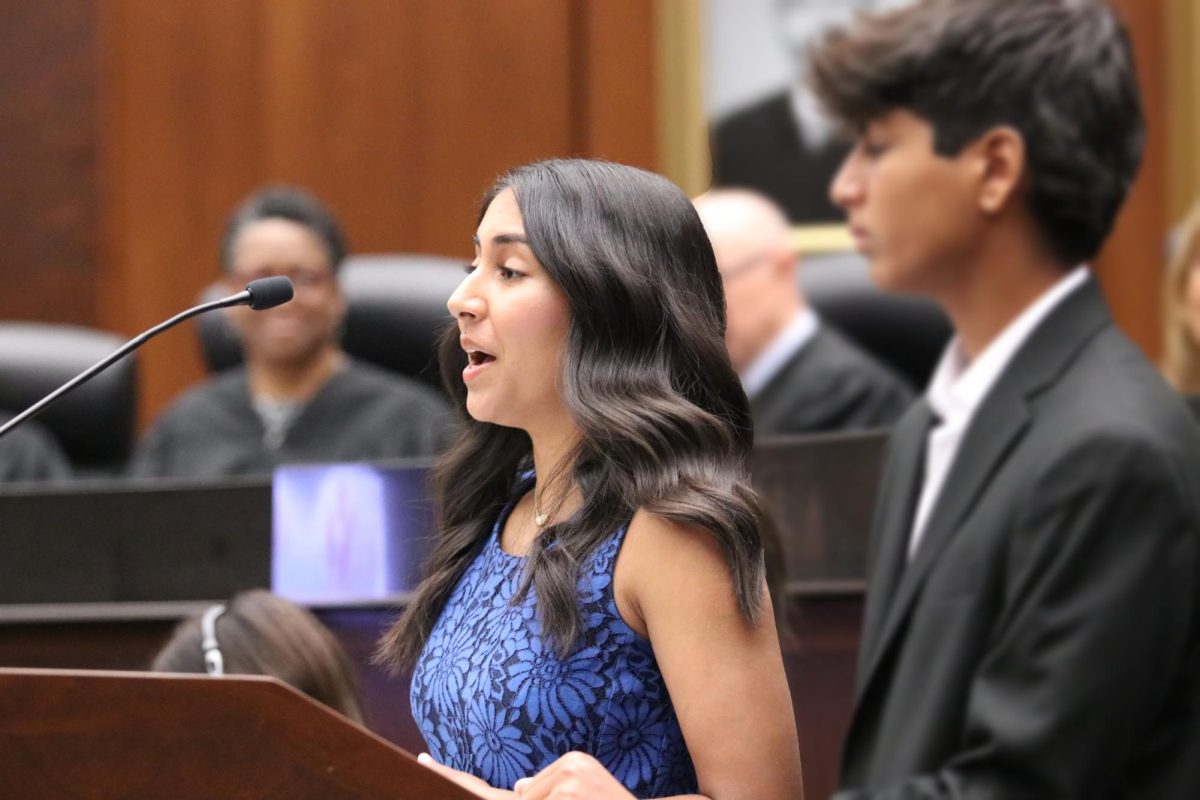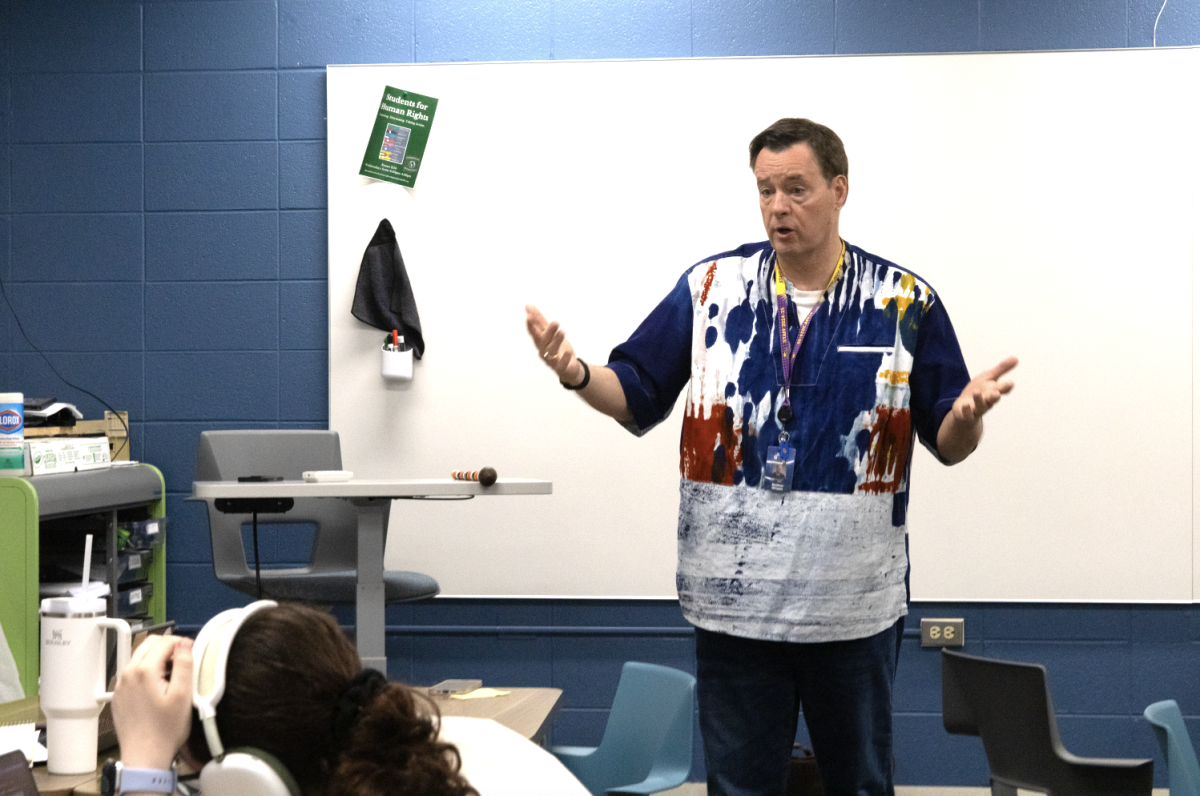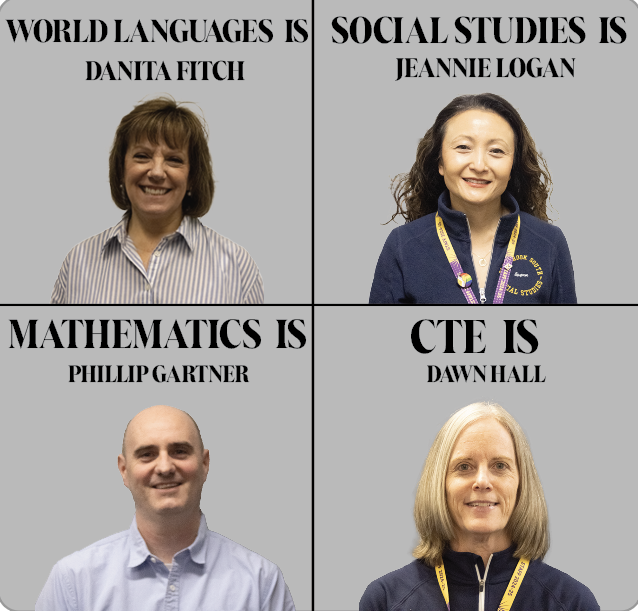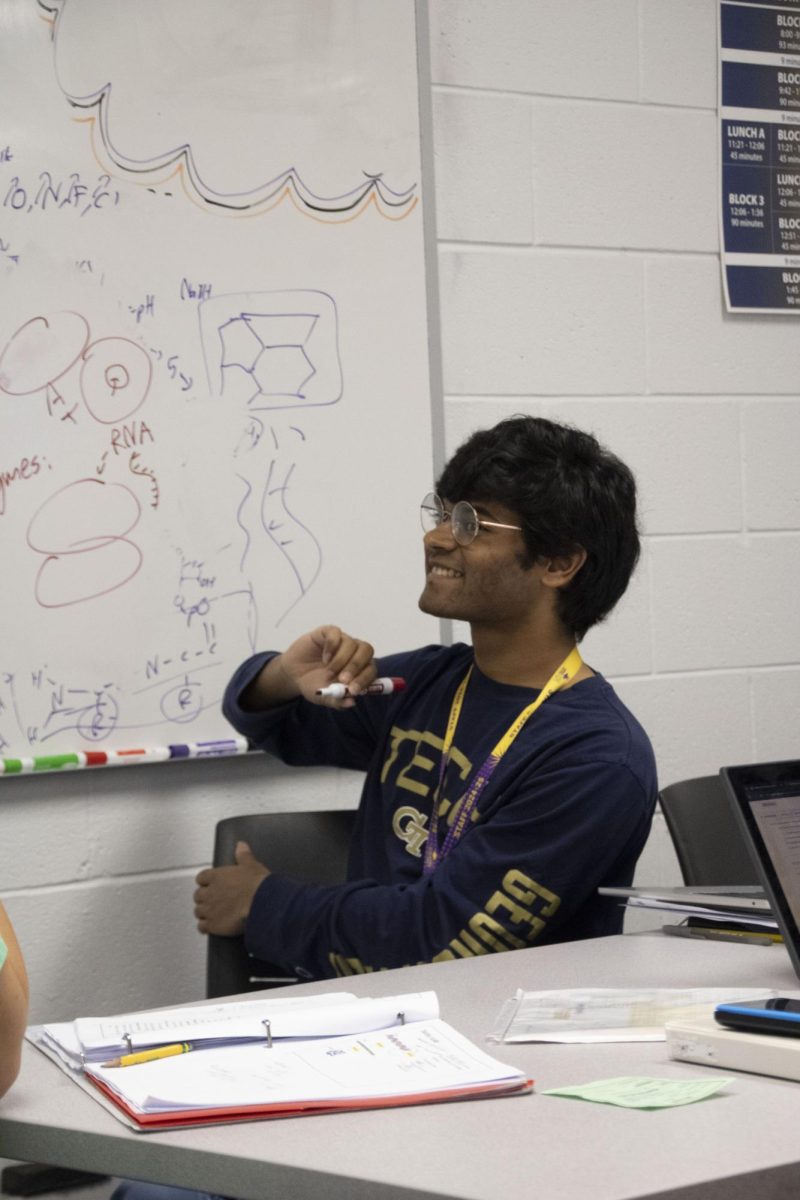At 5,000 feet above ground, senior Emily Horvath flies over Racine, Wisconsin, relaxed with her arm out of the window of a Cessna 150 airplane. Horvath spent the summer studying and learning how to fly planes through a program called Young Aviators.
According to Horvath, taking off, although nerve-wracking, is one of her favorite parts of flying. After the nerves of the take-off pass, Horvath can finally relax as she takes flight.
“Taking off is my favorite part [of flying], because it’s so exciting and you just go up and your stomach does that little flip thing; it’s so fun,” Horvath said. “When you’re up there and you’re just kind of cruising, my mind is pretty clear. […] The cool thing with these planes is that you can open the windows and you can put your arm out.”
Although flying seems to come naturally to Horvath, a lot was involved in the process of being able to fly a plane. In order to learn to fly, Horvath needed to complete a program that offered students flying lessons in order to get one step closer to getting her pilot’s license.
Young Aviators is a program located in Racine, Wisconsin that takes students from ages 14-18. Not only is the program meant to teach students how to fly, this program also offers many other learning opportunities that students can benefit from, including moving them towards acquisition of their pilot’s license, Horvath’s eventual goal.
“The week-long Young Aviators program is a fairly intense one,” Sean Dwyer, vice chairman of Young Aviators, said. “The students fly, simulate, fabricate and learn aviation at both a basic science level and at the cockpit level where they put STEM [Science, Technology, Engineering, and Math] into practice. Our goal is not to produce the next generation of pilots. It is to get students interested in, and appreciative of, science, technology, engineering and math. So future journalists are as welcome as future astronauts.”
Although anyone can apply to be in this program, only 12 students are accepted. According to Dwyer, this program is looking for good grades, diligence, curiosity, demonstrated leadership and commitment skill. However, Horvath’s involvement with stage crew is what really made her stand out in this process, according to Dwyer.
“Being a stage manager for a play indicated both management and leadership skills,” Dwyer said. “Behind the scenes work in a theater suggested skills in the area of tools, like building props, light boards, sound boards, etc.”
According to Horvath, although science had never been her “strong subject”, she still felt like she learned a lot from the camp. Young Aviators made sure to cover all the nuts and bolts that go into flying in a way that catered to her learning style.
“What I liked about the program was that I like to learn things comprehensively,” Horvath said. “I don’t like to just [learn] how to fly because then I always have the question, ‘Well how does it fly?’ I’m the kid who always asks the really annoying questions like, ‘Why is the sky blue, mom?’ I am that kid. And so what I loved about Young Aviators is that we learned physics, we learned chemistry, we learned about the history of different aircrafts and [there were] guest speakers who would talk about stealth planes, the aviation business and what it’s like to be a commercial pilot.”
Although the experience has been great for Horvath, it had not always been smooth sailing, especially the first time she was scheduled to fly. The bad weather on that day was enough to stop the flight and stir up Horvath’s nerves.
“When I was supposed to fly [for the first time], it stormed and you can’t fly these airplanes [in bad weather] because they’re so small,” Horvath said. “So I actually couldn’t fly the first day I was supposed to, so I was already worked up. I was kind of panicked and my mom’s scared of planes, so I think I got that from her.”
Horvath luckily had a good instructor the next day to help her get through the take-off nerves.
“I was super nervous and my flight instructor, Matt, helped me out with most of the first day,” Horvath said. “[Matt helped me with] the preflight check where you check if the wings are okay, no dents or anything because something as crazy as a small dent can totally mess up how your plane flies. […] It takes your stomach a little bit to adjust to the bumping up and down and you’re a little on edge at first, but then you just get really into it and it’s so fun. The next day I was taking off by myself, so that was awesome.”
Even though Horvath would like to get her pilot’s license, she does not want to pursue the career of becoming a pilot. Rather, Horvath wants to receive her license so she can enjoy a passion in travel and flight.
“I actually joined the program to see if I wanted to be a pilot, because I always liked flying and travel,” Horvath said. “I don’t think I would want to be a pilot, but I’d love to get my pilot’s license and have money in the future to fly as much as I want, like as a hobby. I had so much fun doing it, so [the more] I can fly the better.”
So far, Horvath has 10 out of her 40 hours that she needs for her pilot’s license. According to Horvath, although she cannot fly by herself until she gets her license, she still enjoys being with great instructors and spending time in the air.
Although the program was a lot of hard work, Horvath feels more people should try to learn how to fly. Horvath has so far found the experience to be a positive one and would like people to participate in this thrilling experience as well.
“If you want to fly and you’re kind of holding yourself back and you have some extra money to just try it, please do it, it’s so fun,” Horvath said. “It’s the most exhilarating experience. It was on my bucket list and I was like, ‘You know I should really try it.’ […] It’s such a great experience. Even if you decide flying is not for you [afterward], just try it once!”



